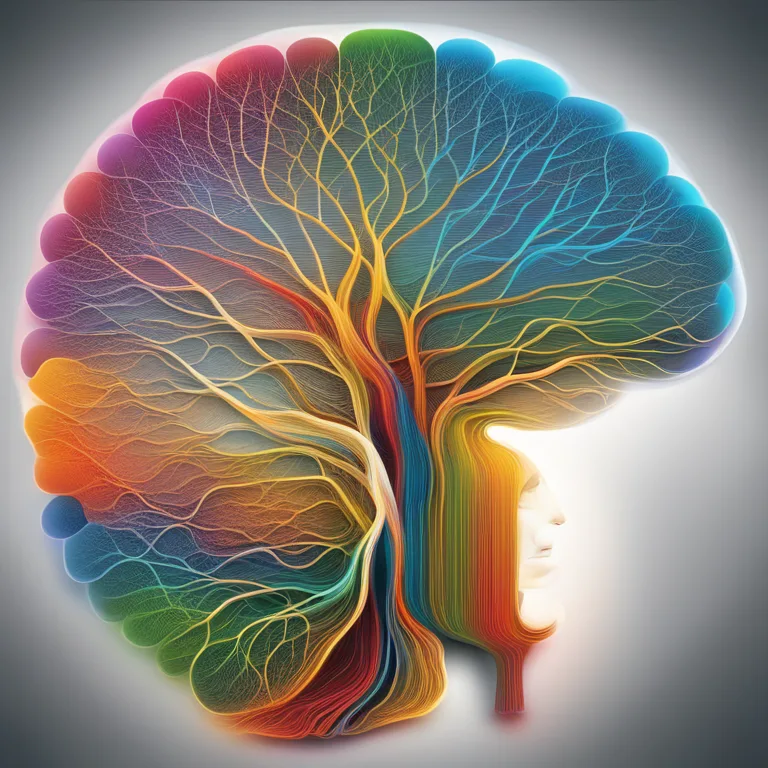
Neural Pathways of Meditation
Discover how modern neuroscience interprets meditation techniques and their influence on brain function.
article by Hina Kurosawa
The Science of Stillness
In recent years, the ancient practice of meditation has come under the scientific spotlight, revealing fascinating insights into how it benefits the human brain. Neuroscience, the branch of biology that deals with the nervous system, has begun to demystify the effects of meditation techniques on our neural pathways. Through the assistance of advanced imaging technologies, such as functional magnetic resonance imaging (fMRI) and electroencephalography (EEG), researchers have been observing the brain's response to meditation, contributing to a comprehensive understanding of its underlying mechanisms.

Strengthening Brain Connectivity
One of the most crucial findings in the neuroscience of meditation is the impact on brain connectivity. Meditation appears to strengthen the connections between different regions of the brain, a phenomenon known as neuroplasticity. These strengthened pathways can lead to enhanced cognitive abilities, like improved attention, memory, and processing speed. Furthermore, meditation practices have been associated with increased gray matter density in areas linked to learning, empathy, and stress regulation.

Meditation and Stress Reduction
Stress reduction is another significant benefit attributed to meditation, and neuroscience offers an explanation for how it occurs. Regular meditation practice reduces activity in the amygdala, the brain's 'fight or flight' center responsible for processing fear and anxiety. It also promotes a healthier stress response by modulating the release of stress hormones. This neuroendocrine shift not only helps to manage stress in the short term but may also protect against long-term stress-related disorders.

Enhancing Mindfulness and Awareness
Mindfulness meditation is specifically designed to cultivate a heightened state of awareness and focused attention. Neuroscientists observe that during mindfulness practice, there is increased activity in the prefrontal cortex and anterior cingulate cortex—regions involved with executive function and attentional control. This suggests that practitioners of mindfulness may not only be better equipped to focus their attention but also to maintain it amidst the distractions of daily life.

Altering Brainwave Patterns
Different meditation techniques can induce different brainwave states, which signify various levels of cognitive functioning. For instance, transcendental meditation is often associated with increased theta wave activity, indicative of deep relaxation and creativity. In contrast, focused attention exercises may result in heightened alpha wave activity, representing calm alertness. These altered states of consciousness can lead to a multitude of psychological benefits, including better mood regulation and creative thinking.
Impacts on Aging and Cognitive Decline
An exciting area of research explores meditation's impact on aging and cognitive decline. Some studies suggest that meditation can slow the brain aging process, preserving cognitive function as we age. Long-term practitioners often exhibit fewer signs of brain atrophy typically associated with aging. Additionally, the practice may improve the resilience of the brain, making it better equipped to withstand the neuropathological changes associated with conditions like Alzheimer's disease.
Practical Applications in Therapy
The insights gained from neuroscience don't merely inform our understanding of meditation's benefits; they are also shaping its application in therapy. Mindfulness-based stress reduction (MBSR) and mindfulness-based cognitive therapy (MBCT) are examples of practices that integrate the neuroscientifically-backed benefits of meditation into treatment for a range of conditions, including depression, anxiety, and chronic pain, underlining the profound potential of meditation in clinical settings.
Published: 12/20/2023
Modified: 12/20/2023
More predictions
Come back here soon to learn more about yourself and your future


Jedi Meditation Techniques for Inner Peace
Master Jedi meditation techniques to enhance your mindfulness and connect with the Force within and around you.


Ease Anxiety with These Meditation Practices
Discover effective meditation techniques to help calm your anxiety and achieve a serene mind.


Drift to Sleep with Guided Meditation
Discover meditation techniques that help promote restful sleep through relaxation and mindfulness.